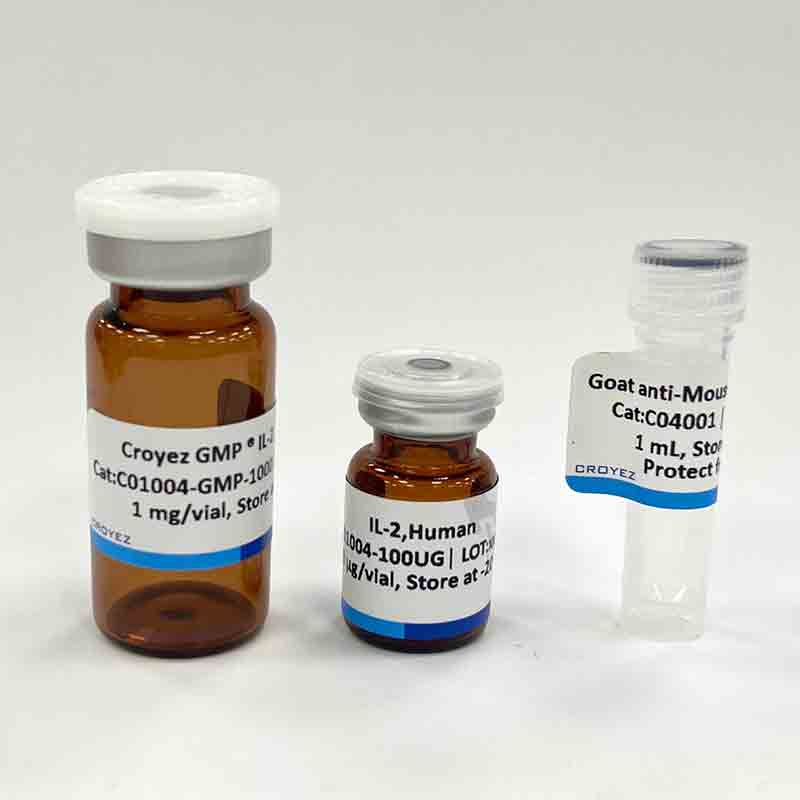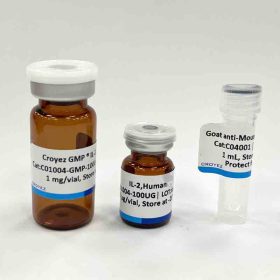TGF-β2 is a secreted protein known as a cytokine that performs many cellular functions and has a vital role during embryonic development. TGF-β2 signaling begins with binding to a complex of the accessory receptor betaglycan and a type II ser/thr kinase receptor termed TGF-beta RII. This receptor then phosphorylates and activates another ser/thr kinase receptor, TGF-beta RI, or alternatively, ALK-1. The whole complex phosphorylates and activates Smad proteins that regulate transcription (3, 11, 12). Use of other signaling pathways that are Smad-independent allows for disparate actions observed in response to TGF-beta in different contexts.
Sequence:
MALDAAYCFRNVQDNCCLRPLYIDFKRDLGWKWIHEPKGYNANFCAGACPYLWSSDTQHSRVLSLYNTINPEASASPCCVSQDLEPLTILYY
IGKTPKIEQLSNMIVKSCKCS with polyhistidine tag at the C-terminus
Source:
Escherichia coli
Endotoxin Test:
<0.01 EU per 1 μg of the protein by the LAL method.
Activity:
Measure by its ability to inhibit IL-4-induce proliferation in HT-2 cells. The ED50 for this effect is <0.2 ng/mL. The specific activity of recombinant human TGF beta 2 is > 5 x 106 IU/mg.
Purity:
>98% as determined by SDS-PAGE. Ni-NTA chromatography
Formulation:
The protein was lyophilized from a solution containing 20 mM sodium citrate, 0.2 M NaCl, pH 3.5.
Reconstitution:
It is recommended to reconstitute the lyophilized protein in sterile H2O to a concentration not less than 100 μg/mL and incubate the stock solution for at least 20 min to ensure sufficient re-dissolved. In some experiments, it recommends to add 10 mM HCl when reconstitute lyophilized protein.
Storage:
Lyophilized protein should be stored at -20°C. Upon reconstitution, protein aliquots should be stored at -20°C or -80°C.
Note:
Please use within two weeks after protein reconstitution.





